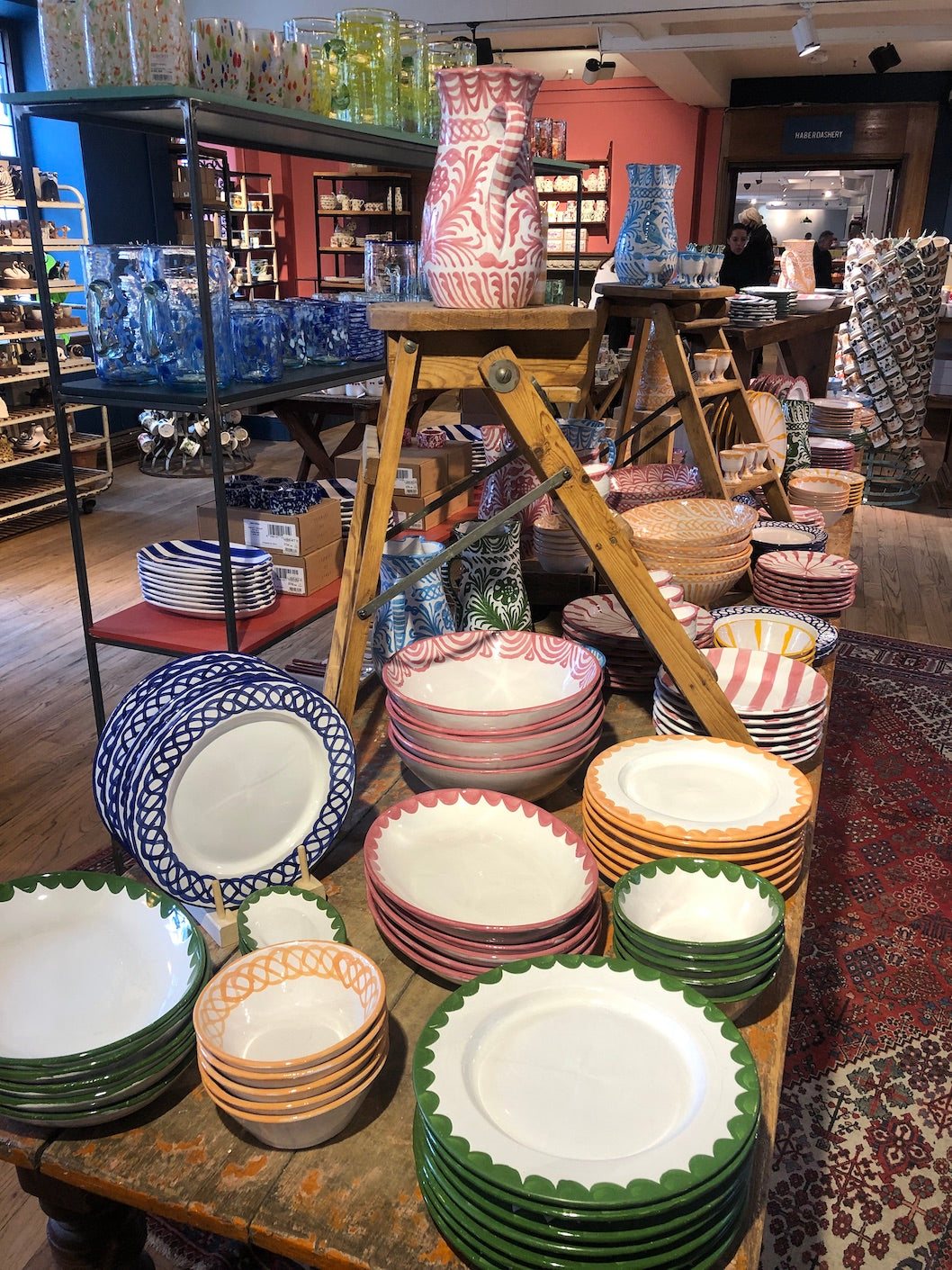Granada is Spain's spiritual home of decorative ceramics.
Andalucia’s jewel, the city is nestled at the base of the Sierra Nevada mountains and still produces the colourful, glazed pieces we associate with Spain.
The Alhambra, viewed from the barrio of Sacromonte, famed for flamenco and cave dwellings.
The history of ceramics can be traced back to the c. 700 years when much of Spain was ruled by north African kings. Islamic tradition favoured ceramic tableware over silver and gold favoured by Europeans, and elevated the production of it to a high artform. As Granada served as the capital, the Alhambra palace was home to the kingdom’s best examples. The palace showcases the rich history of ceramic art in the city, with breath-taking tiles lining kilometres of walls and floor.
‘Granada’ is the word for Pomegranate in Spanish
This reflects the fruit’s close association with the city, dating back to ancient times. The fruit is the symbol of the city, adorning lamp posts, stone work and - of course - pottery.
The tradition of hand-painting ceramics is maintained by a very few artisans still practising in the city today. Luckily, based from Madrid, we were able to hop in a car and visit the makers ourselves. The artisan we work with to bring this historic ceramic to you are a family business, trained by the regional master.
The designs currently in use date back to the c.19th and beyond, using cobalt to create the signature bright blue and copper oxide to create the trademark Granadan green. The style is known as ‘cerámica fajalauza’ and is highly collectable.
Our Circus plates and bowls are inspired by the historic design above, still hand painted by master craftsmen centuries later.
